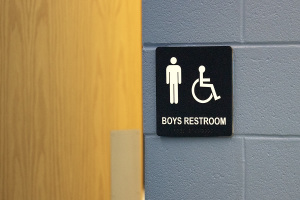The Underrated Eisenhower Coalition

Every political science undergraduate learns the "canonical" list of realigning elections: 1828, 1860, 1896, 1932, and 1968. These elections, so the narrative goes, bring about sharp, enduring changes to the American political system, forcing one party into the background and allowing another party to come to the forefront.
I've long been skeptical of the utility of the concept of realignments. But oddly enough, if we look closely at the voting habits of various political grouping, we do find one enduring, long-lasting example of what we might call realignment. It isn't, however, on any of the canonical lists.
I'm speaking of the Eisenhower coalition. Dwight D. Eisenhower is one of those executives whose terms in office have enjoyed substantial and steady upward revisions by students of presidential administrations. While Ike was initially viewed skeptically by scholars — historian Arthur Schlesinger rated him 22nd of 31 in 1962 — today he routinely finds himself placed in the top 10. His moderate approach to domestic policy, his stewardship of the country through the early days of the civil rights revolution, and his adept handling of the emerging Cold War all mark his presidency as important, and at the very least, "near-great."
So it is only fitting that we should begin to recognize that he also brought about a lasting change in the political alignments of the country. The New Deal coalition did not fail in 1968, as many imagine, but rather fell apart, at least at the presidential level, in 1952.
Eisenhower grafted three significant parts to the traditional Republican coalition of northern "Yankee" Republicans, businessmen, and small towns in the Midwest. The first was one of the unlikeliest candidates for Republican voting in the country as of 1952: The South. While the dominant narrative continues to insist that the South began to realign toward the Republicans in the wake of the passage of the Civil Rights Act of 1964, in fact, Southern loyalties had begun to weaken during the presidency of Franklin Roosevelt.
Put simply, rich Southerners began to vote like their Northern counterparts during the New Deal. As the country emerged out of the depression, there were a lot more rich Southerners. This, in turn, forever altered the landscape of American politics.
Over the course of the Roosevelt presidency, the South voted increasingly Republican every year. In 1932, the region had given FDR 81% of the vote. By 1944, that share had declined to merely human levels of 72%, even though FDR was still winning handily nationwide. To put this in perspective, the Democratic presidential nominee in 1904 lost by double digits nationally, yet still managed to win 66% of the Southern vote.
This wasn't a generalized improvement for Republicans, however. It was focused in the newly emerging cities, where the wealth was concentrated and where immigrants from the North were gradually transforming the demographics of the South. The rural areas, by contrast, remained stubbornly Democratic at the presidential level until the 1970s.
This came to a head in 1952. Ike lost the South by only three points, winning Virginia, Tennessee, Florida, and Texas. Four years later, Ike won a plurality of the popular vote in the South, becoming the first Republican since Reconstruction to do so. He added Louisiana to the list of states won in the South, breaking through in the Deep South for the first time in nearly a century.
Nor could his win be attributed solely to his celebrity status. His vice president, Richard Nixon, came close to carrying the South in 1960, despite the presence of the most prominent Southern politician in the country on the Democratic ticket (Lyndon Johnson).
Eisenhower also grafted the newly emerging suburbs onto the extant Republican base. Suburbs had been slowly emerging in the 1910s and 1920s, but with the strength of the postwar economy and the emergence of a mass middle class, they began to dominate the once rural borderlands of central cities.
They also became staunchly Republican. In the 1920s, the collar counties of Philadelphia and suburban New York City provided about 10% of the Republican vote in their respective states. By the 1950s, those areas were providing nearly half of the Republican vote.
Eisenhower did one other key thing: He won over the white working class. White ethnics had actually been a modestly Republican constituency after the candidacy of William Jennings Bryan and Woodrow Wilson's politically disastrous peace accords at the end of World War I. But Al Smith's candidacy and the New Deal had swung them strongly toward the Democrats.
Ike brought them back. Truth be told, the liberalism of the New Deal had been increasingly creating a rift with white ethnics who were in many ways quite conservative (FDR's famous purge of 1938 included one conservative Northern Democrat). Italians dropped out of the New Deal coalition in 1940 after FDR's famous speech at the University of Virginia asserting that Italian dictator Benito Mussolini had stabbed France in the back.
Eisenhower took advantage of this weakness by exploiting several issues, in particular the newly emergent issue of anti-communism, to make substantial inroads with this group. Ike won the Catholic vote outright in 1956, becoming probably the first Republican to do so since Warren Harding in 1920 (Calvin Coolidge probably would have done so if not for the three-way race in 1924). In truth, Reagan Democrats had previously been Nixon Democrats, and they had been Eisenhower Democrats beforehand.
This four-legged stool — the old Republican base, Southerners, suburbanites, and the white working class — provided the foundation for the Republican majorities that appeared from 1952 to 1988. There are substantial contiguities at the subnational level between Eisenhower's wins and Reagan's.
In 1952, some 1,700 counties voted more Republican than the country as a whole (there are about 3,000 total). Of those 1,700, 70% voted more Republican than the country as a whole in the succeeding nine elections, and 80% at least leaned Republican in 1956, 1960, 1968, 1980, and 1984. This is a tremendous amount of consistency over an extended period of time.
This isn't to say that these coalitions were identical — Reagan ran better in the South and Eisenhower performed better in the North. But there is an overwhelming similarity among these elections.
The importance of the Eisenhower coalition is all the more apparent when one looks closely at the three Democratic majorities that emerged from 1952 to 1988. Far from being throwbacks to the New Deal era, these were either unique "deviating" elections, or antecedents of the Clinton coalition that would emerge in 1992.
For example, the 1960 election was unlike anything the country had seen, or has seen since. The country split along religious lines, with John F. Kennedy winning overwhelmingly among Catholics and Nixon running strong among Protestants. The race was exceedingly close, not only nationally, but at the state level as well, where 34 states were decided by 10 points or less.
In 1964, LBJ did not put the New Deal coalition back together again. He performed relatively poorly in the South and Mountain West, which together constituted the backbone of the New Deal coalition. LBJ won by breaking off suburbanites from the Republican coalition, and adding liberal northerners who were horrified by Barry Goldwater's candidacy.
In many ways, this resembled the Democrats' coalition today.
Finally, Jimmy Carter's win in 1976 reflected simply his unique strength for a Democrat in the South. When he proved unable to replicate that strength in 1980, he was unable to secure a second term.
Interestingly, under this narrative, Ronald Reagan does not represent the birth of a substantial Republican majority, but rather the beginning of its decline. By pulling the party rightward, the weakening of northern attachments to the party, which began with the Goldwater candidacy, accelerated. You can see this in the returns from 1988, when his vice president had difficulty replicating Reagan's margins in northern suburbs, and then in the 1992 elections, when Bill Clinton succeeded in wresting those suburbs from the Republican coalition.
So should we then say that this is an example of a realignment in the classic sense? Not at all. Instead, this provides a unique example of how the short-term contingencies that dominate presidential elections can run into the long term. First, Republicans found themselves fortunate beneficiaries of the post-War prosperity. Because recessions became rare and relatively mild, they were able to dominate elections through a fair run of good luck.
More importantly, the lengthy duration of the Cold War played into Republican hands. Democrats, for whatever reason, were never quite able to put together a coherent narrative on their position on the Cold War. Republicans, on the other hand, adopted a clear position of staunch anti-communism, and found that the issue managed to paper over other disagreements within the party. Suburbanites, southerners, and white working class voters all agreed that the Soviet Union represented a clear threat, and were willing to overlook disagreements on other policies in an attempt to win the Cold War. Once that threat receded, the glue that held the Republican coalition together disappeared, and the Eisenhower coalition fell apart.
When we look back over 20th century politics, the presidency of Dwight Eisenhower increasingly appears to be an important one, both for its shaping of domestic and foreign policy. But we should also realize that its effects extend beyond that. Eisenhower made real, lasting contributions to the makeup of the Republican and Democratic coalitions, and bequeathed to the country one of the most stable presidential alignments in history.
This column was orginally published at The Crystal Ball.





























